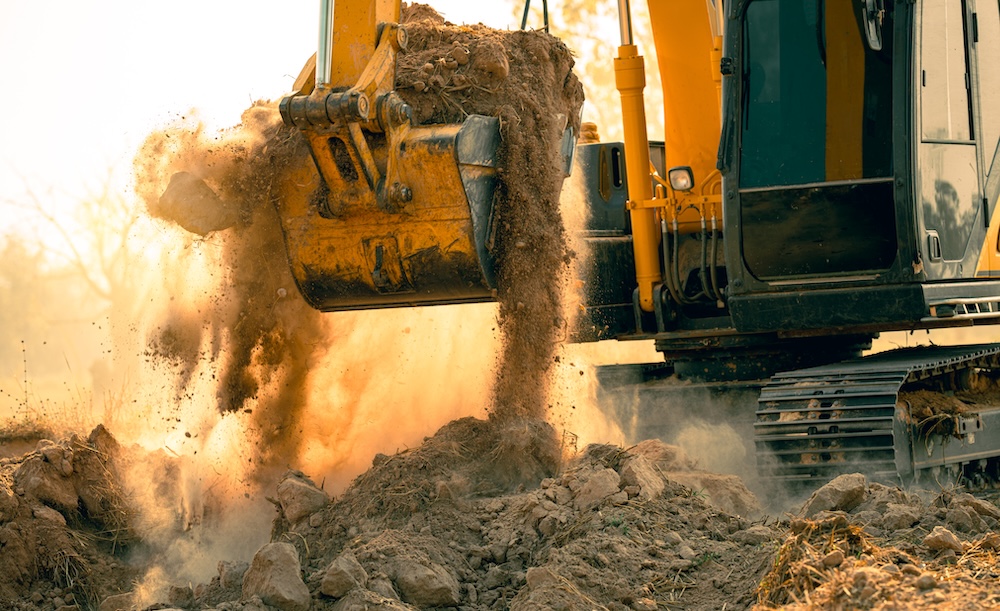When construction restarts after a standstill, it takes a nuanced set of developer skills that even some seasoned pros may lack.
Jill Duke and Keith Tibbles from Level Capital
One of the most effective ways to mitigate risks as you take over a mid-construction project is to partner with a developer who has the right mix of specialized skill and experience. Seasoned developers bring a deep understanding of project management, construction processes, regulatory navigation, and financial structuring. They have the knowledge to identify problems, develop effective solutions, and manage the project efficiently. Importantly, they can help overcome many of the hurdles that stalled a project in the first place.
Let’s explore how selecting the right developer can drive project success, best practices for forming a partnership, and real-world case studies that illustrate successful collaboration.
What Experience Matters
Mid-construction projects often stall due to one or more of the following: financial mismanagement, poor planning, inexperience with a particular type of project, regulatory challenges, or a lack of regional knowledge. An experienced developer can add value in a multitude of ways.
Guidance from a local professional is critical to navigate complex permitting and zoning requirements. Choose someone who knows the community politics, the accepted building design style norms, and the typical building seasonality required to complete the project in a timely manner and within budget for market positioning.
An experienced developer will also bring a trusted network of contractors and suppliers, helping to secure much-needed resources and avoid workforce challenges and supply chain disruptions. In addition to being knowledgeable about the area, a seasoned partner can identify cost-saving opportunities without compromising quality. Their experience ensures coordination among stakeholders, enabling smoother project execution and helping rebuild lender and investor confidence in a previously troubled project.
Don’t Trust: Vet and Validate
Selecting the right development partner is crucial. Criteria to watch for include track record and reputation, regulatory and compliance expertise, and a strong alignment of vision and values.
Validate track record and reputation. Begin by reviewing the developer’s project completion history. Request a current resume and a detailed schedule of builds that includes project descriptions, budgets, and start and end dates from the past several years.Review marketing materials, MLS listings, and inspection reports to determine the quality of completed work.
Confirm the developer’s financial stability through a credit report, background check, and recent bank statements that validate access to capital and established credit lines. Gather multiple references and customer and vendor reviews. Speak directly with recent clients, lenders and local officials to gain firsthand information about the developer’s reputation. An experienced, reputable developer should be willing to provide this information.
Regulatory and compliance. Regulatory and compliance expertise is essential when evaluating an experienced developer. Confirm the developer has direct experience with the same type of project in the target community. Ensure they have worked with local planning departments, zoning boards, and environmental agencies. Conduct thorough legal background checks as part of your due diligence; and avoid any company with a history of legal issues, fines, or code violations.
An experienced developer should be able to identify and secure grants, abatements, or tax credits to help reduce financing costs.
Alignment of vision and values. Begin by establishing clear strategic objectives and ensure these are openly discussed and documented.Quality of work is part of the vision. A long-tenured developer will have pride in their work. When possible, personally walk completed sites to assess the quality of construction. Quality not only affects safety and code compliance but also resale or rental value.
Finally, the developer should demonstrate a commitment to transparency and maintain a solid reputation. Integrity reduces reputational risks for lenders.
Dot Your I’s and Cross Your T’s with Solid Partnership Structure
A well-structured partnership can protect all parties involved and maximize the chances of success; an inadequate partnership, on the other hand, can negatively impact a project.
Define clear roles and responsibilities. The scope of work should outline who is responsible for design, permitting, budgeting, subcontracting, construction management, go-to-market strategy, or take-out financing. Document in writing milestone deadlines with specific deliverables and target completion dates for each stage. Also specify how decisions will be made, who has authority, and escalation paths for disputes. Leaving goals or deadlines open-ended leads to future risks and, possibly, legal action. Proper expectations, consequences, and details are important for a successful project.
Set up financial terms and incentives. A joint venture agreement, performance-based compensation, equity stakes, or claw back clauses can be viable options for building a sound partnership structure.
When involved in a joint venture agreement, clearly state each party’s financial contribution and profit-sharing arrangement. For performance-based compensation arrangements, bonuses for early or on-time delivery and budget adherence are good incentives to keep projects on track and the lines of communication open. In some cases, using an equity stake is a viable option in exchange for reduced upfront fees. If claw back clauses are considered, they should include terms for recovering losses if the developer does not deliver on their obligations.
Secure legal protections and exit strategies. Protect your investment by proactively building legal safeguards and contingency options into the project structure. To help avoid potential liens and other payment-related risks, partner with a reputable fund control company. These firms have experienced staff as well as professional processes and procedures that protect the lender.
Incorporate clear dispute resolution mechanisms into all agreements. Define specific arbitration or mediation paths to efficiently resolve disagreements without costly litigation. Another protection to include is force majeure clauses to protect all parties against unforeseen external disruptions (e.g., natural disasters, war). Finally, structure buy-sell provisions that allow one party to exit the contract under predefined terms.
When Even ‘Seasoned’ Isn’t Enough
Over time, developers complete multiple projects of the same type, and they become experts. Research, validate, and select an experienced developer for your project type. Doing so will help streamline approvals, target marketing strategies, bring deep regulatory knowledge, and ultimately result in a successful project. Examples of projects requiring a specialized developer are luxury condominiums, historic properties, and affordable housing complexes.
Luxury condominium mid-stream projects may require experience with re-permitting and redesigning. That prior experience with urban luxury housing includes knowledge of both jurisdictional and agency approvals, including the marketing strategy.
Adaptive reuse of a historic property requires a preservation-savvy developer to tackle regulatory issues. A prior history of understanding and navigating community rapport and securing landmark status may be needed to complete a unique project.
A developer with a proven track record in nonprofit or public-private partnership projects is well-suited to restructure a distressed project. Their experience enables them to optimize costs through the use of alternative materials and phased scheduling, increasing the likelihood of turning the project into a success.
Partnering with an experienced developer is one of the most effective ways to mitigate risks in mid-construction financing. These knowledgeable partners offer invaluable technical insight, local regulatory fluency, and a tested ability to rescue and complete troubled projects.
Taking the extra time needed to find the right partner is critical to successful project completion. By evaluating a developer’s financial health, track record, and alignment with your goals—and structuring the partnership with clarity and accountability—you can transform a distressed asset into a profitable investment. In today’s unpredictable construction climate, a strategic development partner isn’t just an asset; it’s a necessity.











Leave A Comment